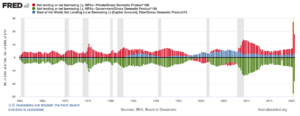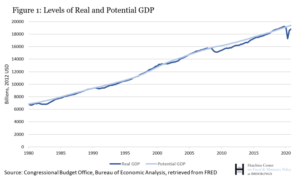Modern Monetary Theory is an economic school of thought that starts with the fiscal operations whereby currency issuer Treasury Departments and Central Banks add money to the economy and take money out. It also take into account how the commercial banking system shapes the economy.
The first published book describing this was published in 1993.
The title is Soft Currency Economics: What Everyone Thinks That They Know About Monetary Policy is Wrong.
The author is Warren Mosler.
Warren Mosler at the time was NOT considered to be an economist. He was a bond trader, dealing in government securities.
Table of Contents
Who is Warren Mosler?
Warren Mosler is now identified as an Economist, but that seem true only in retrospect.
Warren Mosler obtained a BA in Economics from the University of Connecticut in 1971, after switching his major from Engineering to Economics due to failing grades. He graduated with a 2.5 GPA.
He never pursued more economics degrees.
In 1982 he founded a hedge fund company named Illinois Income Investors where he was made President.
Illinois Income Investors used several investment strategies involving government securities, mortgage backed securities, LIBOR swaps and LIBOR caps, and financial futures markets.
It appears that while trading in US Government bonds, Mosler came to realize the way we understand US Federal Government fiscal operations, and their influence on the overall economy, was wrong.
In 1993 he published his first book on MMT (see above) and has been a vocal proponent ever since of what is now called Modern Monetary Theory or sometimes Modern Money Theory.
In recognition of his contributions to the field of Economics, Mosler was granted an honorary doctorate in Economics from Franklin University Switzerland in 2014.
Whether someone with “only” a BA in Economics is an Economist or not is a matter of semantics, but with the granting of the honorary doctorate, he most definitely earned the title of Economist.
His twitter handle is @wbmosler.
How Did He See What Others Had Missed?
As I understand it, and it seems so simple in hindsight, he saw that the US Treasury sales of Treasury Bonds was not needed to allow the US Government to fund it’s operations, to spend money.
That in fact, bond sales did not precede government spending, but rather government spending preceded bond sales.
If you think about this for a minute, it makes sense. If it was necessary to sell bonds to raise money in order to spend money, where did the money to buy the bonds come from?
If you roll this back to when US Dollars first came into existence, you can see that before Treasury Bonds can be sold, US Dollars have to exist with which to buy them.
From a fiscal perspective, this was simply a shift in perspective, but it made all the difference to understanding how Government, Money, and Taxes all fit together and work together.
For those of you who are scientifically minded, this was both as small and as big a shift in perspective as when Nicolas Copernicus wondered how the solar system would be if the Sun was at the center. Or as when Albert Einstein wondered what would be the implications of the speed of light BEING an absolute constant.
A very small shift in perspective that fundamentally changed something we know about the world.
Who Else Knows This?
There are many more MMT Economists (and others) than I list below, but these are the people I’ve been paying some attention to. Not all of them claim to be an adherent of MMT, but they all talk about economics in terms that are familiar to anyone with knowledge of the basic ideas of MMT.
- L Randall Wray (Professor of Economics: Bard College)
- Stephanie Kelton (Professor of Economics and Public Policy: Stony Brook University)
- Mariana Mazzucato (Professor in the Economics of Innovation and Public Value: University College London)
- Pavlina Tcherneva (Associate Professor of Economics: Bard College)
- Michael Hudson (Research Professor of Economics: University of Missouri-Kansas City)
- Steve Keen (formerly Associate Professor of Economics: University of Western Sydney)
- Mark Blythe (Professor of International and Public Affairs: Brown University)
- David Graeber (formerly – he died recently – Professor of Anthropology: London School of Economics)
- John T Harvey (Professor and Chair in Economics: Texas Christian University)
- Nick Hanauer is NOT an economist or an MMT guy, but he gets a special mention for reason stated in the post about him
Quite a few economists, political economists, and some prominent non economists seem to accept that Modern Monetary Theory starts with an accurate description of how currency issuer Treasury Departments and Central Banks work together to add money to the economy, remove money from the economy, as well as takes into account how commercial bank operations and especially lending practices shape the economy.
Does anyone in the US congress know this?
Funny you should ask (or that I presuppose that you would).
I know of two members of the US congress who have at least a basic understanding of how this works.
They are:
- Congressman John Yarmuth, who served the 3rd district of Kentucky from 2007 to 2023
- Congresswoman Alexandria Ocasio-Cortez, serving the 1rth district of New York
Weirdly, while MMT is starting to gain more widespread acceptance, in 2019 and 2020 some members in both the House and the Senate submitted bills “Recognizing the duty of the Congress to condemn Modern Monetary Theory and recognizing that the implementation of Modern Monetary Theory would lead to higher deficits and higher inflation”.
It looks like both bills died in committee.
What’s weird about those two bills is Modern Monetary Theory STARTS WITH a description of how the US Treasury Department and Federal Reserve Bank work TODAY.
There is no “implementing MMT”, we’re already doing MMT.



